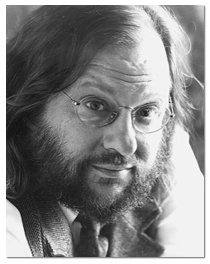Joel Lurie Grishaver
 This piece was motivated by a new essay, “Yes, Something Can Be Done, A ‘Purple’ Solution to Intermarriage” by Stephen M. Cohen. This article, in Mosaic Magazine, is a response to a piece called “Can Anything be done?”
This piece was motivated by a new essay, “Yes, Something Can Be Done, A ‘Purple’ Solution to Intermarriage” by Stephen M. Cohen. This article, in Mosaic Magazine, is a response to a piece called “Can Anything be done?”
When I read the Cohen article, I saw the Hebrew School teacher as the hero/anti-hero who hid in the trenches in France/Germany during WWI, who sneaked up ladders to make charges through the rain and fog, over barbed wire, around landmines, dodging bullets, and trying to gain ground. It is an ugly scarred picture. It is painted in greys. And Hebrew school teaching has been a lot like that, not pretty, painted in greys, a rag tag group of Israelis and others, fighting the overwhelming force of Americanization and hoping to drag a few survivors back to the Jewish side.
Stephen M. Cohen writes: “The discourse on Jewish intermarriage over the last decades has been dominated by two schools of thought. One may be termed the normative school; the other, the welcoming school.
The normative school—ably represented by Jack Wertheimer—sees intermarriage through the lens of historical Jewish norms. Insofar as this school offers policy prescriptions (which it rarely does), it calls for strengthening the norms that have historically promoted in-marriage and discouraged out-marriage.
By contrast, the welcoming school not only sees large-scale intermarriage as inevitable and unstoppable but advocates warmly receiving intermarried families into Jewish families and communities. Rather than stressing norms that privilege in-marriage, it works to dispel perceptions that Jewish groups or leaders harbor negative attitudes toward the intermarried or resist their active participation in Jewish life.
When we are in the trenches, palming our cigarettes and drinking coffee from tin mugs, we complain to each other about our students using the rules the “normative school” claims; voicing complaints that are filed in a drawer marked “soccer.” In our classrooms we play with “welcoming rules;” smiling when our students first naively and then maliciously share their Christmas experiences. We have all read the Spiritually of Welcoming and Relational Judaism. We have learned the wisdom of Ron Wolfson and know it is our only strategy.
In the article Dr. Cohen suggests four Purple Solutions:
First and foremost, the organized Jewish community can strive to promote earlier marriage among Jews…
Second, more converts are needed, especially from the ranks of non-Jewish spouses and the not-yet-married romantic partners of Jews.
Third: as we have seen, only about a third or fewer of the children of intermarried parents are raised as exclusively Jewish. What if the non-Jewish spouses—the parents of these children—we’re given license to consider themselves as belonging to the Jewish people without taking the extra step of a religious conversion?
Fourth, we need a more family-friendly society. Since non-Orthodox Jewish birthrates closely track those of highly educated secular Americans, helping to raise the fertility rates of the larger society in which Jews live would have an indirect but immediate effect on Jewish fertility rates as well.
All that is good for demographic victory, but it doesn’t help those of us who play person-to-person defense. All of us who work in and for the Jewish classroom are concerned with winning the Jewish future one student at a time. In our universe there are also two schools. One school says it has to be fun. If it isn’t fun it won’t work. The other school says that it has to be meaningful. If it isn’t useful, if it doesn’t make a difference, other things are more fun, so Jewish learning won’t be retained. If you want to get meaning (with relationship) check out this article in K’veller.
A Story: Years ago a bunch of high school kids in Chicago started a group called Rashi’s Rangers. They met once a month, on Shabbat and asked a different rabbi to teach them each month. I, a non-rabbi, was honored to have my month. A year later when I began a job as a Youth Director, I invited a few students saying, “I will be in my office Friday afternoon studying the Torah with Rashi, I would be honored if you would join me. We started with six kids. Two became Rabbis, One a Director of Life Long Learning, and one dropped out of the synagogue before the end of the first year. My Rashi study group grew to eleven regulars and the surrounding youth group grew to more than one-hundred.
Torah Aura has always argued (1) that Jewish education should be welcoming, (2) it should be fun, and (3) it should be life-changingly meaningful. We must say hello. We must listen. We must smile. And we should share stuff that is startlingly fascinating and useful. Fun and empty won’t do that.
To see this kind of model happening in the world, check out Lab Shul. It is fun. It is accepting of all. And it offers deep insight into living.
The questionable future of Jewish life can be blamed on synagogues, federations, and Hebrew Schools (among others) —there is enough blame to go around. Others can feel guilty, too. But as Jonathan Sarna teaches: “We didn’t fail—America succeeded.” We have to start thinking about Jewish celebrations as life changing, Bible as being the story of Me. Siddur as a reflection on my life (even though every prayer says we). And Jewish community the place I am welcomed, related to, and learn ways to improve the quality of my life. All apologies to Ron, but relationships need content.

